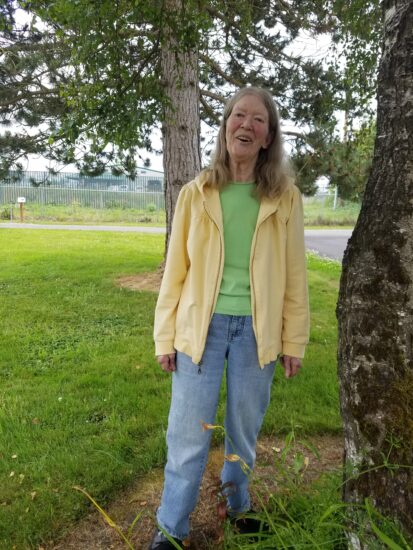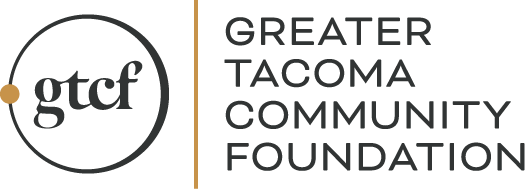
Community
30
Complex Gifts Can Simply Transform Communities

The late Marydale Brooks, pictured here in 2016, believed “the most important stuff is not all about the money.”
“Sometimes the most important stuff is not all about the money.” – Marydale Brooks
The late Marydale Brooks believed the “important stuff” happened “when everyone starts pitching in with their talents, resources, or pure grunt work to get the job done.” A longtime Buckley resident, she was unassuming in her demeanor, community-minded, and collaborative in her giving.
Understanding what assets beyond cash can do is an eye opener
According to Evelyn Ryberg, GTCF’s Senior Director of Philanthropic Services, Marydale was a devoted philanthropist who started early. She knew her community well and was purposeful about “layering” her giving. “She started with cash available and eventually involved securities,” Evelyn says. “As her estate planning evolved, she began to include gifts of real estate.”
Marydale’s “complex assets” in real estate became “complex gifts,” allowing her to establish the White River Hometowns Fund through GTCF.
“Understanding what assets beyond cash can do is an eye opener,” Evelyn says. Complex gifts might include real estate, closely held or restricted stock, intellectual property or royalties, insurance, virtual currency, privately held interests, business interests, artwork, and valuable collections.
Even though such complex non-liquid assets make up the bulk of most of people’s wealth, they don’t always pop into donors’ minds when charitable goals are considered, Evelyn says. GTCF’s complex gifts committee regularly works with donors and their professional advisors to manage such transactions. The committee also can help donors make gifts to the nonprofits they support who may not have the expertise to accept such gifts on their own.
“Complex gifts can reduce or eliminate estate taxes,” Evelyn says. “And they can open some amazing doors toward greater philanthropic impact.”
The community—true to Marydale’s “important stuff” logic—has pitched in.
The impact of Marydale’s philanthropic giving has been a catalyst for her community. She’d be thrilled, for example, to hear Buckley residents Jan and Gary Burley talk about the weekend food program her fund helps make possible.
In 2011, the Burley’s church, Community Presbyterian in Buckley, began sending food home on weekends with students whose families were in need. Before COVID-19, they delivered 115 meals each week. Today, they purchase, package, and deliver weekend meals to 258 children in White River School District, thanks in part to a grant from Marydale Brook’s White River Hometowns Fund.
The community—true to Marydale’s “important stuff” logic—has pitched in. Gary and Jan, who have served as coordinators of the program for six years, say, “It takes a village.” In their community—where there is no grocery store or pharmacy and social services are thin—individuals, businesses, schools, PTAs and other churches provide everything from food donations and collection to finances, deliveries, and administrative support.
It can come as a surprise that you don’t have to be wealthy to make a huge impact
“Nobody wants to think of a hungry child spending a weekend with no food,” Gary says, recounting the times fellow shoppers, eyeing their overflowing carts of food, start asking questions and end up pulling out their wallets. He and Jan can tell dozens of stories of community members—many of whose friends or family have taken advantage of the program—who get involved. Their float in the Buckley Log Show parade compelled the owners of the Firehouse Pub to hold a fundraiser. The Hops N’ Drops in town makes a donation from every kids’ menu purchase. “It’s like a snowball effect,” Marydale once said of the way her community pitches in.
Marydale Brooks was special to her community. She lived simply and found joy in sharing her resources with the people and places she loved. “It can come as a surprise,” Evelyn Ryberg says, “that you don’t have to be wealthy to make a huge impact. You may be able to attain a new level of giving by widening the scope to include assets you’d never considered before.”
The Burleys and the weekend food program are proof of the catalyzing power of giving. They remember one child, pre-COVID, who met them at the door of the school as they were making a delivery. “Oh boy, thank you so much!” he said. “You have no idea how much this has not only helped me, but also helped my family.”
“It makes you want to do more,” Gary says. Which is exactly the “important stuff” Marydale had in mind.
RESOURCES
- Creative Charitable Planning with Closely-Held Businesses—A Case Study Approach (Professional Advisor Webinar Slides, password: PA-Webinar2021)
- Charitable Gifts of Noncash Assets (Book by Bryan Clontz, Ph.D., CFP®, CAP®, President, Charitable Solutions, LLC)
- White River Hometowns Fund
- White River Community Grants Support Access & Celebrate Local History (GTCF.org, November 7, 2018)
- Community Presbyterian Church, Buckley
- What Assets Make Up Wealth? A look at asset distribution based on net worth tiers (Visual Capitalist)

